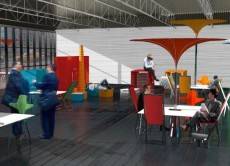November 15, 2013
Quarter of the UK workforce report they’re suffering long-term ill health
Administrative and support activities, which includes facilities management, is one of five UK industries where employees have reported the highest levels of long-term ill health. However across all the sectors a staggering eight million people, or a quarter of the UK’s workforce (27%) say they suffer from a health problem that’s lasted more than a year. According to the new Health at Work Index from the British Heart Foundation (BHF) one in ten workers (12%) – approximately 3.5 million people – said their ability to do their job is limited by poor health. This includes over half of diabetes sufferers (58%) and the same proportion of people suffering from depression, mental illness or panic attacks (58%). (more…)





















November 13, 2013
Working Time Directive – why the CBI calls for a permanent opt-out
by Pam Loch • Comment, Legal news, Workplace
The UK’s opt-out of the maximum 48 hour working week being proposed by the EU is yet again under the microscope. This follows the recent publication by the Confederation of British Industry (CBI) of a report which highlights the frustration felt by UK businesses regarding the Working Time Directive. “Our Global Future: The Business Vision for a Reformed EU”; focuses specifically on the continuing concerns for UK businesses around the extensive level of involvement EU legislation has on how they operate their business. It shows that the majority of businesses still favour the opt-out and the flexibility it provides. Interestingly however, many did not see the need to change the current entitlement to paid holidays or rest breaks. (more…)